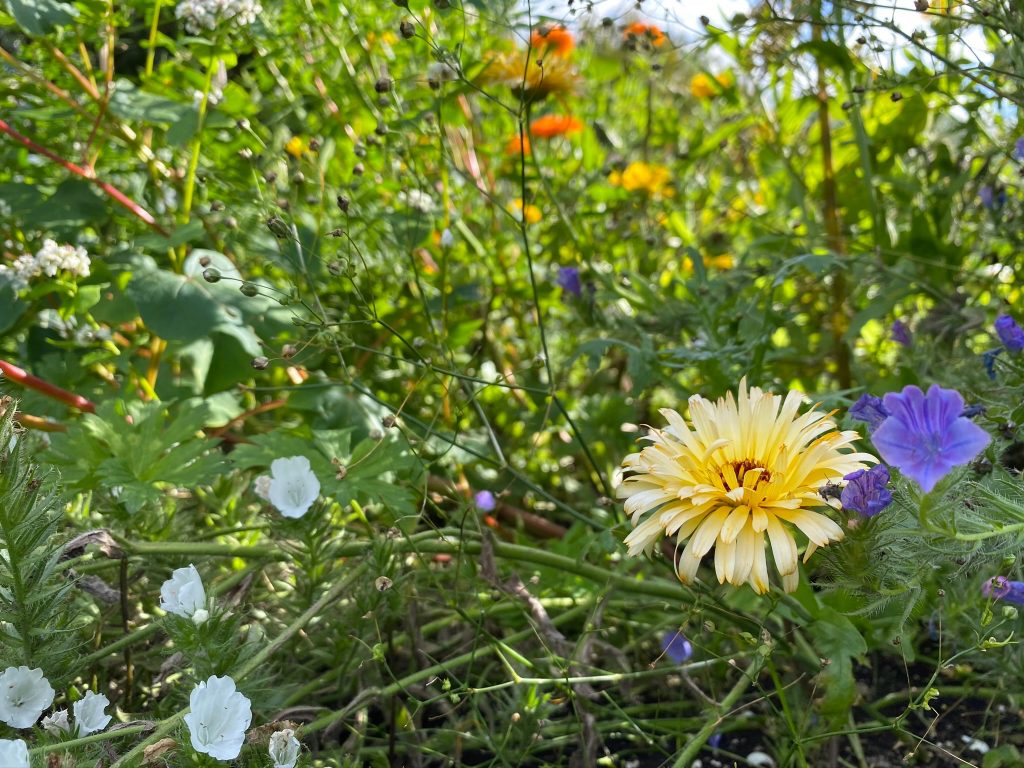Bees and other pollinators are in decline, and several species have become extinct or endangered in recent decades. So how can we help them?
Insect pollinators are essential to maintaining the health of ecosystems and for global food production, with 75% of crop species and up to 88% of flowering plant species requiring pollination (1). We can’t also rely on our honey Bees, as diversity of Wild Bees is also important to improve productivity of crops (2), and there are 250 species of Bee in the UK.
Bees are amongst the most important eco engineers to benefit the local environment, but let’s not forget about our other pollinators, including certain ants, beetles, butterflies and others that have a significant effect on pollination rates (3, 4). Reduced population of these species not only affect local food production, but also impact the wider food web and biodiversity across the UK.
The Wildflower Catastrophe
Unfortunately the story of pollinators in recent decades has been one of loss and decline. Pollinators go hand in hand with flowers, and as 97% of wildflower meadows have been lost since the 1930s, so too have bee, butterfly and other pollinator populations dropped significantly in this timeframe (5).
Invertebrate pollinators will often move from the shelter of woodland and scrub to wildflower meadows in order to pollinate and lay their eggs, and so there is a need for a mixture of landscapes to offer wildlife the spaces they need to thrive.

The introduction of natural ecological processes into landscapes through rewilding has the potential to bring huge benefits to pollinators. Rewilded land is often home to great swathes of wildflowers, and can provide natural shelter and habitat to all pollinating insects. Several bee rewilding approaches around the world have also included the building of “log hives” to replicate natural hive conditions of bees to encourage them to nest in forests and other ecosystems.
At Carbon Rewild, we aim to foster new homes for pollinators by enabling the growth of flower and other plant species, as well as the protection of other keystone species that are essential to supporting greater biodiversity.
One study has recently shown the introduction of feral horses to a rewilding habitat over a three-year period has shown that naturally grazed areas showed greater plant diversity than non-grazed areas, and the number of pollinators increased in the areas of greater diversity (6).
Including large mammals into rewilding areas can often result in positive cascade effects for biodiversity and ecosystem functioning, supporting a variety of plant and animal life and hopefully reverse the decline of pollinators in the future!
- Ollerton, J., Winfree, R. & Tarrant, S. How many flowering plants are pollinated by animals? Oikos (2011)
- Burkle L.A., et al. Plant-Pollinator Interactions over 120 Years: Loss of Species, Co-Occurrence, and Function, Science (2013)
- Rogers, Shelley R., et al. Bee Species Diversity Enhances Productivity and Stability in a Perennial Crop, PLOS ONE (2014)
- Radar, Romina, et al. Non-bee insects are important contributors to global crop pollination, PNAS (2016)
- Bumblebee Conservation Trust, Threats and Pressures (visited 2020)
- Garrido, P, Experimental rewilding enhances grassland functional composition and pollinator habitat use, Applied Ecol. (2019)

